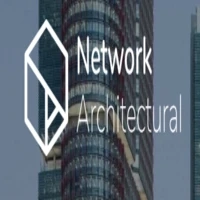Cladding must be updated and upgraded to meet modern fire safety regulations. This article delves intothe multiple benefits of non-combustible cladding.
In the ever-evolving landscape of construction and building materials, non-combustible cladding stands out as a crucial advancement. With growing concerns about fire safety, environmental sustainability, and building durability, this innovative cladding solution offers a myriad of benefits that go beyond mere fire resistance.
Fire-Proof Safety
The primary and most lauded advantage of non-combustible cladding is its fire-resistant properties. Traditional cladding materials, often composed of wood, vinyl, or composite materials, can contribute to the rapid spread of fire, posing significant risks to occupants and emergency responders. Non-combustible cladding, typically made from materials such as metal, fibre cement, or stone, does not ignite, burn, or emit toxic smoke when exposed to fire. This dramatically reduces the likelihood of fire propagation and gives occupants more time to evacuate safely.
This fire-proof characteristic is particularly vital in high-rise buildings, commercial properties, and densely populated residential areas where fire incidents can have catastrophic consequences. By incorporating non-combustible cladding, architects and builders can ensure a higher level of safety and compliance with stringent fire safety regulations.
Enhanced Durability
Beyond fire safety, non-combustible cladding offers enhanced durability. These materials are designed to withstand harsh weather conditions, including extreme heat, cold, wind, and rain, without deteriorating. Unlike wood, which can warp, rot, or suffer termite damage, or vinyl, which can crack and fade over time, non-combustible cladding maintains its integrity and appearance for many years.
For instance, metal cladding is resistant to rust and corrosion when properly treated, and fibre cement cladding is impervious to water damage and resistant to impact. This durability translates into lower maintenance costs and a longer lifespan for buildings, making non-combustible cladding a cost-effective investment in the long run.
Aesthetic Versatility
Non-combustible cladding does not compromise on aesthetics. Modern manufacturing techniques allow these materials to be produced in a wide range of colours, textures, and finishes, enabling architects to achieve diverse design visions. Whether aiming for a sleek, modern look with metal panels, a traditional stone façade, or a versatile fibre cement exterior, non-combustible cladding provides ample options.
The aesthetic versatility of non-combustible cladding ensures that buildings can be both safe and visually appealing. This is particularly important in urban environments where architectural beauty and uniqueness are highly valued.
Environmental Sustainability
Sustainability is a growing concern in the construction industry, and non-combustible cladding contributes positively in this regard. Many non-combustible materials, such as metal and fibre cement, are highly recyclable, reducing the environmental impact of construction waste. Additionally, these materials often have a lower carbon footprint compared to traditional cladding options.
For example, metal cladding can be made from recycled metals, and fibre cement cladding incorporates natural and renewable materials like cellulose fibres. These sustainable practices align with green building standards and can contribute to achieving certifications such as LEED (Leadership in Energy and Environmental Design).
Energy Efficiency
Non-combustible cladding can also enhance the energy efficiency of buildings. Certain cladding systems are designed to provide superior thermal insulation, reducing the need for artificial heating and cooling. This leads to lower energy consumption, reduced utility bills, and a smaller carbon footprint.
For instance, insulated metal panels combine the durability and fire resistance of metal with effective thermal insulation properties, creating a building envelope that minimises heat loss in winter and heat gain in summer. This contributes to a more comfortable indoor environment and supports sustainability goals.
Summing up, non-combustible cladding is a multifaceted solution that addresses several critical aspects of modern construction. Its fire-proof properties ensure superior safety, while its durability guarantees long-term performance and cost savings. Aesthetic versatility allows for creative architectural designs, and its environmental sustainability supports green building practices. Additionally, energy-efficient options make it a wise choice for reducing operational costs and environmental impact.


